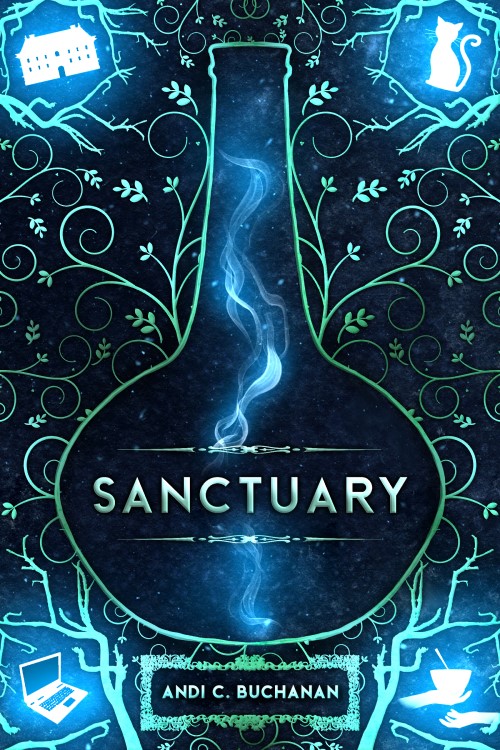
The refuge in Sanctuary, by New Zealand author Andi C Buchanan, is a many-roomed house dating from the 17th century. Once a mansion, it is now in a state of disrepair, tended to by residents with inadequate funds for its proper upkeep. The refugees it shelters come in two sorts: (A) neurodivergent (autistic, ADHD, …) and/or LGBTQIA+ individuals escaping abusive backgrounds or just looking for a non-judgemental environment where they don’t stand out, and (B) ghosts.
Yes, Sanctuary is a ghost story, but an unusual one. The resident ghosts are not responsible for the horrors inflicted. In fact, it is the ghosts who are most at risk in the early parts of this story. The motley collection of eight living residents treat the ghosts with respect, and try to protect their privacy from the prying eyes of sensation-seeking ghost hunters. As the story develops, a more serious threat appears, attacking first the dead and then the living, until both sets of residents are fighting for… well, let’s not say their lives, but their continued existence is as stake.
The events leading up to that start when an elderly man arrives with a collection of old bottles. He is downsizing on his way to a retirement home, and wants to find a good home for the ghosts in the bottles. The residents, horrified at the thought of being trapped in a bottle for eons, begin freeing the captives, but in doing so, also free something unexpected and evil: a ghost eater.
The narrator is an autistic trans woman named Morgan. (I’m not sure which pronouns Morgan prefers; I’m going with they/them/their as potentially least offensive.) Morgan gives their partner Araminta a gift without realising the gift comes with strings attached. When the gift brings Araminta under the ghost eater’s power, Morgan is forced far out of their comfort zone, to do whatever is necessary to bring back the woman they love.
Sanctuary is a lovely story of a found family, a collection of damaged misfits who discovered a place where they belong. The residents have different strengths and weaknesses, and conflict does happen, but they all work to accomodate each other, although some of the ways they work together might be a bit baffling to more neurotypical people. I particularly enjoyed one scene where they are gathered in one room but to all appearances isolated in individual bubbles, as each one is focused on their own electronic device. Morgan, however, is experiencing a strong sense of family togetherness and support as they all participate in a group chat, because all of them are less stressed by text than by speech.
Sanctuary is also an introspective and character-driven story, with the first half mainly introducing the residents, both living and dead, and immersing us in an autistic person’s psyche. The plot, such as it is—thin and without surprises—doesn’t really get moving until the second half. This isn’t necessarily a problem, if you understand going into it that the author’s focus is on the people involved and their relationships, not action.
There are a few problems: It should have had another proofreading pass before publication. (I’m usually tolerant of a few typos—I have to be; I make enough myself—but there was one glaring continuity error that made me wince.) A lot of character names are introduced, and it takes a while to get them all sorted out. (Wait, which one is Joseph again? Is he alive or dead? A score card or cast of characters would have been helpful.) And parts of the climactic action sequence were quite vague. (I have no idea how long that confrontation with the ghost eater went on. Minutes? Hours? Days? Probably not days… My confusion wasn’t helped by Morgan’s narration going off on tangents in the middle of it, although I suppose that’s part of the point: their strategies for coping with stressful situations are not typical.)
Problems aside, I loved the story, both for its insights into Morgan’s heart and mind and for its depiction of a cohesive, supportive family bound not by blood ties but by shared needs and the values of kindness and empathy.
